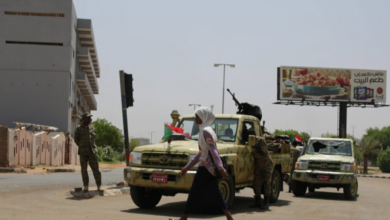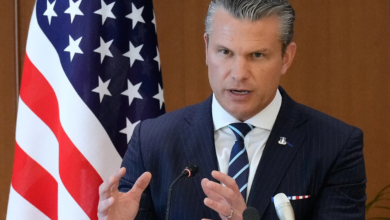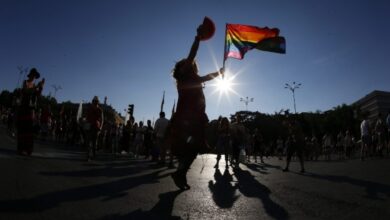The Cost and Benefits of a Formula 1 Grand Prix in Barranquilla
The Colombian government announced that it will support the local government of Barranquilla to host a Formula 1 Grand Prix

Photo: Unsplash
LatinAmerican Post | Santiago Gómez Hernández
In 2022, Formula 1 will have 23 circuits throughout the year and the Colombian government suggests that in the coming years, one of these may be Barranquilla, the capital of the department of Atlántico and the main Colombian Caribbean city. The idea of Mayor Jaime Pumarejo and the support of President Iván Duque was branded from the beginning as an unthinkable utopia for a country like Colombia, since it would compete with countries like Austria, France, the United States, Saudi Arabia, Brazil, Mexico, among others. But how expensive and how beneficial is a Formula 1 Grand Prix?
Who will he have to compete against?
Barranquilla (or Colombia) is not the only one interested in hosting the big top. There are a large number of countries and circuits that want to enter or be part of the automobile calendar again. Among these are Germany (Nuremberg), the Netherlands (seeking their second Grand Prix), and many others who already have a road course built.
Even countries with economies similar to Colombia’s have been in the process of entering the calendar for years. Since 2010 there had been talking of a Grand Prix in Bulgaria and there was even talk of financing from a country in the Persian Gulf. Hopes still remain to enter next year, but nothing is certain.
You may also be interested in: How Much Will it Cost Novak Djokovic Not to Get Vaccinated Against COVID-19?
However, the CEO of the competition, Stefano Domenicali, has shown interest that the tournament having up to 30 courts. That would open the squares for several cities. However, the FIA has already made it clear that the costs cannot be raised exponentially for fear that the teams will not be able to pay them.
The dimensions of the tracks
For the construction of a racetrack or a street circuit, several regulations are needed. For example, the straights cannot be longer than 2 km and the circuit as a whole cannot be shorter than 3.5 km. Now, new GPs are recommended to be a maximum of 7 kilometers in total, according to autosport.com.
Additionally, permanent races must have a 12-meter wide roadway. However, the website makes it clear that there is an exception with the Baku GP. As this is a “temporary” prize, there are parts where the track is only 7.6 meters long.
Additionally, drainage requirements, protection barriers, pit area, and media center must be met. Which implies an important investment, at least, for the adaptation.
But, how much does it cost to host a valid Formula 1? And what economic benefits does it bring?
Just to make a valid one, the investment starts at approximately 50 million dollars. This is what the rights to pay to Liberty Media cost. But the cost depends a lot on the city. For example, Monaco, due to its antiquity and symbolism, should not pay any additional cost to host the Monaco award. But Singapore or Abu Dhabi had to pay out millions of dollars. Particularly in the case of Saudi Arabia, the Riyadh GP cost 53 million dollars in permits.
Formula 1 races are run on 2 types of track. A closed-circuit in a car racer or a street circuit like the one in Monaco. Whatever the case, the host city will have to make a large investment to build the racetrack or to modify the streets that can host a race where speeds of more than 300 kilometers per hour are reached.
According to Pumarejo’s calculations, the benefits would be multiple. As a first step, according to the mayor, a grand prize is attended by about 320,000 people during the entire event, which lasts 3 days. Of these, 60,000 are international tourists who want to attend and witness the great festival.
Television rights and sponsorships or advertising, everything goes to the coffers of Formula 1. So, what does the city keep? Well, the answer is a bit more complicated. Firstly, it keeps the intangible and economic income generated by the flow of tourists.
For example, according to Forbes, in 2018, the Mexico City Grand Prix left profits of 120 million dollars for hotels in the city. However, the hotel offer and connectivity that the Mexican capital has could be an advantage compared to the fourth largest city in Colombia.
Despite As a result of this, the same Mexican president, Andrés Manuel López Obrador, announced a couple of years ago that he will stop financing the event. This, to be able to build the Mayan Train railway project.
For its part, Azerbaijan, which has held the Baku Grand Prix since 2017, has stated that it has benefited its economy. According to official figures, in the 4 years of the first contract, he registered 500 million dollars in benefits. Of these, 300 are direct, for hotels, restaurants, transportation, etc. While the remaining 200 are indirect, which means: companies and services that are sold to organizations directly associated with the event. Furthermore, according to the BCC (Baku City Circuit), Baku generated between 5 and 10 thousand medium-term jobs.
The bad example of Vietnam
One of the new circuits that most attracted the world’s attention was that of Hanoi, Vietnam. One of the Asian tigers (as the countries of Indochina are known for their economic growth) had everything ready to organize its first Formula 1 GP in 2020. However, due to the COVID-19 pandemic; the change of the calendar, and a corruption scandal, the prize was canceled and it is not known if it will participate again.
Today, Vietnam doesn’t look like it will be competing anytime soon on the calendar. According to caranddriver.com, the reason for the cancellation was a corruption scandal involving has shown the interest that the tournament has up to 30 counts of false accounting, money laundering, forgery of documents, and espionage.
Obviously, a Grand Prix in Barranquilla will be a gamble. If it goes well, it can be a driver of the local and national economy. However, the investment is very high and the local and national government and the private sector must be in total agreement to bet on an event of this magnitude. Additionally, since there is not a large public that is fond of Formula 1 in Colombia and there is no local driver, it is possible to bet on nearby tourism: Mexico. With the high level of Sergio “Checo” Pérez, Colombia and Barranquilla can bet that many Mexicans will travel to the city to see their compatriot up close. There are many variables that must be taken into account, but it is not something so far-fetched and the country can bet on it.




